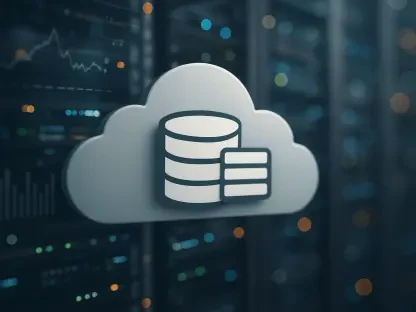Maryanne Baines is an authority in Cloud technology, evaluating various cloud providers, their tech stacks, and their impact on different industries. We’ll discuss the transformation of storage solutions in the media and entertainment industry, focusing on the growth in digital storage capacity, the evolving landscape of content creation, and the increasing need for flexible, cloud-based workflows.
Can you explain the transition the media and entertainment industry is undergoing in terms of storage solutions?
The media and entertainment industry is experiencing a significant transition from traditional physical tape libraries and heavy, on-premises systems to more agile, cloud-based storage solutions. This shift is driven by the need to manage and access rapidly growing volumes of content more efficiently and cost-effectively. As content demands grow, the industry is leaning towards hybrid and cloud-native workflows that offer more flexibility and scalability.
How has the digital storage capacity requirement in media and entertainment grown from 2019 to 2025? What factors are contributing to this rapid growth?
From 2019 to 2025, the digital storage capacity requirement for non-archival applications in media and entertainment is projected to grow from 24 exabytes to 122 exabytes. This rapid growth is fueled by several factors, including the proliferation of high-resolution media, the expansion of online content distribution channels, and the increasing volume of user-generated content. Additionally, the expectation for on-demand access to media further drives the need for extensive storage capabilities.
What types of organizations are evolving into content creators today? Why are they becoming content creators? How has the shift in viewer expectations influenced this trend?
Organizations across various sectors are evolving into content creators, including sports leagues, corporations, faith-based groups, and niche publishers. They are turning to content creation to engage with audiences through online streaming, social media, and mobile apps. This shift is heavily influenced by viewers’ expectations for immediate, high-quality, and on-demand content. To meet these demands, organizations must produce and distribute content more efficiently and creatively.
How is the need for flexibility driving the move to hybrid and cloud-native workflows? What are the key advantages of these models?
Flexibility is a major driver for the move towards hybrid and cloud-native workflows. These models allow organizations to adapt quickly to changing demands and manage resources more dynamically. Key advantages include scalability, cost efficiency, and global accessibility, enabling teams to collaborate seamlessly regardless of location. Additionally, cloud-native workflows reduce the need for significant capital investment in on-premises infrastructure.
What are some of the main benefits of cloud storage for media production? How do scalability and global accessibility play a role?
Cloud storage offers several benefits for media production, such as on-demand scalability, which allows organizations to adjust storage capacity as needed. This is particularly important for handling large media files and sudden increases in content creation. Global accessibility ensures that teams can access and collaborate on content from anywhere, enhancing productivity and enabling faster project turnaround times. This is critical for meeting tight deadlines and delivering timely content.
What are some of the challenges and considerations organizations face when moving their media storage to the cloud? Can you explain retrieval fees and how they impact budgeting for storage?
Moving media storage to the cloud presents challenges such as managing retrieval fees, which are charges incurred when accessing data stored in the cloud. These fees can significantly impact budgeting, especially for organizations with large amounts of data that need frequent access. Other considerations include ensuring data security, compliance with regulations, and the potential for unpredictable monthly costs. Organizations must carefully assess their cloud storage strategies to mitigate these challenges and optimize costs.
How does global collaboration influence cloud storage needs in media production? Why is fast and secure access to shared assets important?
Global collaboration necessitates robust cloud storage solutions that provide fast and secure access to shared assets. This is vital for media production teams that are often dispersed across different regions. Quick and secure access to media files ensures efficient workflows, timely content delivery, and the ability to meet project deadlines. In the competitive media landscape, any delay in accessing or sharing assets can hinder production and affect monetization opportunities.
How do AI and machine learning integrate with cloud storage in media production? What is the significance of predictable storage costs for AI-driven workflows?
AI and machine learning require large datasets for tasks such as automated transcription, object detection, and content recommendation. Cloud storage supports these needs by offering scalable storage solutions. Predictable storage costs are crucial for AI-driven workflows because they ensure that organizations can manage their budgets effectively while scaling their AI projects. Unpredictable costs can impede the adoption and growth of AI initiatives within media production.
How has the surge in cloud storage adoption affected media organizations financially? What are egress fees and why are they concerning for these organizations?
The surge in cloud storage adoption has financial implications for media organizations, particularly due to egress fees, which are charges for transferring data out of cloud storage. These fees can add up quickly, especially for organizations that need to access large volumes of media files regularly. The unpredictability and high cost of egress fees can strain budgets and make it challenging to manage expenses, leading to concerns about the long-term viability of relying solely on cloud storage.
What logistical challenges do organizations face with physical tape libraries? Could you share any real-life incidents that highlight these challenges?
Physical tape libraries come with logistical challenges, such as vulnerability to physical damage, transportation issues, and potential mismanagement of tapes. A real-life example is when an air-conditioning leak flooded an entire tape archive, resulting in significant data loss. Such incidents highlight the risks associated with maintaining physical storage and the importance of considering more resilient and accessible storage solutions.
What is the hybrid approach to storage, and why are some companies choosing this path? What are the pros and cons of on-premises, cloud, and multi-cloud environments?
The hybrid approach to storage involves maintaining both on-premises and cloud-based storage solutions. Companies choose this path to leverage the benefits of both environments. Pros of on-premises storage include control over data and security, while cons include high maintenance costs and limited scalability. Cloud storage offers scalability and accessibility but can be costly due to fees. Multi-cloud environments provide flexibility and redundancy but introduce complexity in management. The hybrid approach balances these factors, allowing organizations to optimize their storage strategies.
Could you provide examples of how large networks and sports broadcasters are using cloud storage for their projects? How do they transition to a deeper cloud adoption over time?
Large networks and sports broadcasters use cloud storage for projects requiring quick turnaround times, such as highlight reels and live event coverage. They often start with cloud storage for specific, short-term projects and gradually increase adoption as they become more comfortable with the technology and its cost-benefit analysis. Over time, they expand their cloud usage for more extensive archiving and content management, integrating their workflows with cloud storage solutions.
How does Backblaze differentiate itself from other cloud storage providers? What advantages does Backblaze offer in terms of pricing and data access? How does Backblaze integrate with media asset management tools and production platforms?
Backblaze sets itself apart with predictable pricing and immediate data access, significantly reducing costs for media workflows. It offers approximately one-fifth the cost of other providers like AWS and does not charge egress fees, making it an attractive option for media organizations. Backblaze also integrates with various media asset management tools and production platforms, allowing for seamless workflows and avoiding vendor lock-in, which is crucial for maintaining flexibility.
What role does generative AI play in the current conversation about media storage? Why do AI startups show significant interest in cost-effective storage solutions?
Generative AI plays a significant role in media storage, as it requires substantial storage for training data and models. AI startups are interested in cost-effective storage solutions to manage these large datasets without breaking the bank. Affordable and scalable storage options are critical for startups to iterate and grow their AI projects efficiently, making cloud solutions with predictable costs particularly appealing.
How are producers balancing the need for scalability with the demand for predictable and transparent billing? What are the common strategies they are employing?
Producers balance scalability and the need for predictable billing by adopting hybrid storage solutions and negotiating clear terms with cloud providers. They often use a combination of on-premises storage for critical data and cloud storage for scalability. Additionally, opting for providers that offer transparent pricing with no hidden fees, like Backblaze, helps manage budgets effectively. Predictable costs allow producers to plan and scale their operations without unexpected financial strain.
Do you have any advice for our readers?
My advice for readers is to thoroughly assess their storage needs and consider the long-term implications of their storage choices. Embracing a hybrid approach can offer the best of both worlds, providing flexibility and resilience. Always prioritize transparent pricing and scalability when evaluating cloud storage providers to avoid unexpected costs. Lastly, stay informed about the latest advancements in cloud technology to make strategic decisions that support your organization’s growth and efficiency.









